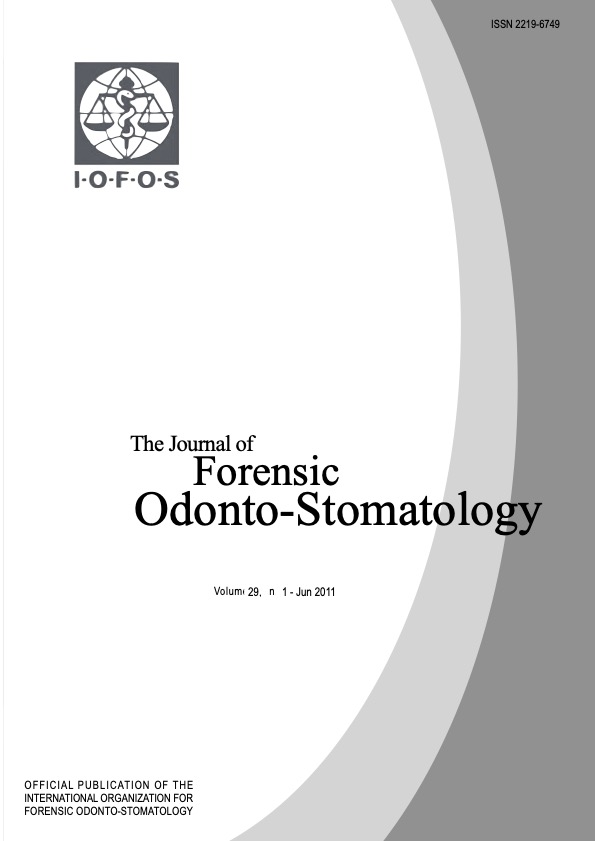Intercanine distance in the analysis of bite marks: a comparison of human and domestic dog dental arches
Abstract
One common parameter considered helpful to identify the origin of bite wounds has been the distance between the canine teeth marks left on the victim. The reliability of this parameter to differentiate the origin of the marks (human or animal) was evaluated using a sample of: a) domestic dogs (n=50) weighting between 4.9 kg and 46 kg of undefined breed and b) human beings (n=50). Dog intercanine distances (ID) were measured directly using calipers, those from the human sample were measured from wax imprints using calipers. It was found that dog bite intercanine distance measurements were overall 2.8% wider for the upper arch and 10.4% wider for the lower arch when compared with the overall result for humans. However, it was observed that the measured values for medium sized dogs (between 9.1 kg and 23.0 kg) are similar to the overall results for humans. Therefore, for this range, the stand alone use of intercanine distance measurements from bite wounds marks are inconclusive with respect of defining if of human origin.

